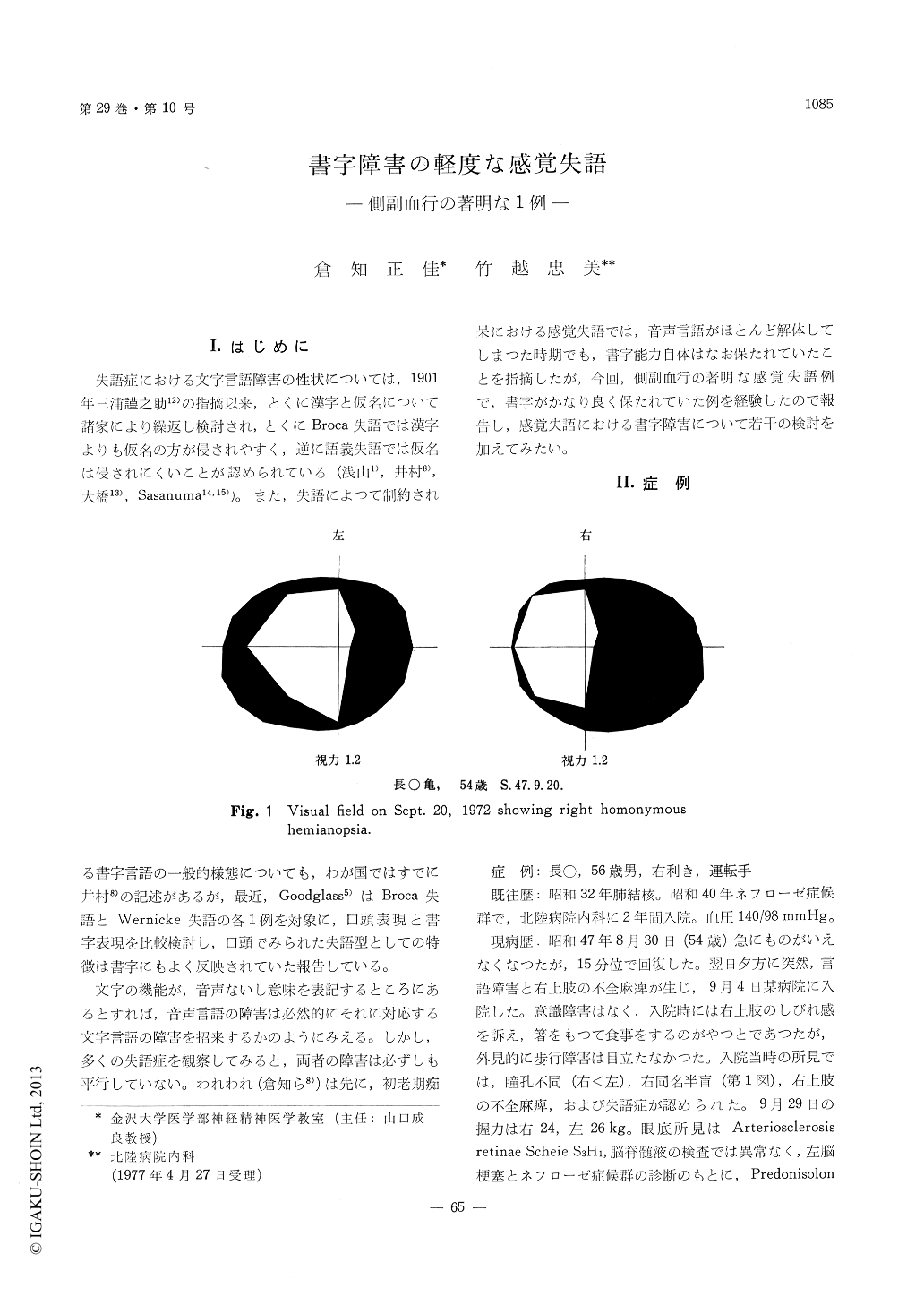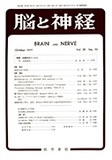Japanese
English
- 有料閲覧
- Abstract 文献概要
- 1ページ目 Look Inside
I.はじめに
失語症における文字言語障害の性状については,1901年三浦謹之助12)の指摘以来,とくに漢字と仮名について諸家により繰返し検討され,とくにBroca失語では漢字よりも仮名の方が侵されやすく,逆に語義失語では仮名は侵されにくいことが認められている(浅山1),井村8),大橋13),Sasanuma14,15))。また,失語によつて制約される書字言語の一般的様態についても,わが国ではすでに井村8)の記述があるが,最近,Goodglass5)はBroca失語とWernicke失語の各1例を対象に,口頭表現と書字表現を比較検討し,口頭でみられた失語型としての特徴は書字にもよく反映されていた報告している。
The patient is a 56-year-old right handed manwho developed right homonymous hemianopsia,paresis of right upper extremity, and speech dis-turbance on August 30, 1972. The latter twosymptoms improved within a few weeks, but onOctober 24 he developed again right hemiparesisand speech disturbance. Neurological examinationshowed exaggerated deep tendon reflexes on theright extremities, extensor plantar reflex on theright side and right homonymous hemianopsia.
Neuropsychological findings on November 17were as follows: his spontaneous speech was poorbut there was no difficulty in articulation. Heshowed marked word-amnesia, paraphasia andperseveration in naming objects. There was nodifference between visual and tactile recognition.He could only understand very simple commandssuch as 'close your eyes'; and ability to point outobjects following an oral command was poor,although he could repeat them correctly. Repetitionof three word sentences was also possible, but hefailed in longer sentences. He could read word-cards aloud in both presentation of Kana and KanjiScript without understanding their meaning. Hecould not read sentences aloud, but dictation ofshort sentences was possible. Copying was per-formed fairly well. Mental arithmetic was poor.There was neither apraxia nor agnosia. Thesesymptoms improved gradually, and reexaminationafter two months showed slight difficulty in objectnaming, repetition, auditory and reading compre-hension. His writing ability was better than othersensory aphasic patients of the same degree. InApril, 1973 he fell from his bed and thereafter hisaphasic symptoms in spoken language worsenedsomewhat. However, reading ability was betterthan before, and dictation of several lines ofsentences was performed correctly. He could usenot only Hiragana but also Kanji Script appropri-ately.
Left carotid-angiogram carried out on December12, 1972 showed the occulsion of the left middlecerebral artery at its proximal part. But there wasa collateral flow form the left posterior frontalartery to the angular, posterior parietal, andoperculofrontal arteries.
Considering the important role of the parietalarea in written language, preservation of writingability in this case may be attributed to this col-alteral flow.

Copyright © 1977, Igaku-Shoin Ltd. All rights reserved.


